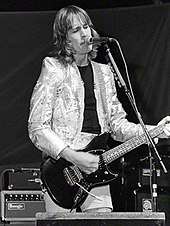
Todd Harry Rundgren is an American musician, singer, songwriter, and record producer who has performed a diverse range of styles as a solo artist and as a member of the bands Nazz and Utopia. He is known for his sophisticated and often unorthodox music, his occasionally lavish stage shows, and his later experiments with interactive art. He also produced music videos and was an early adopter and promoter of various computer technologies, such as using the Internet as a means of music distribution in the late 1990s.
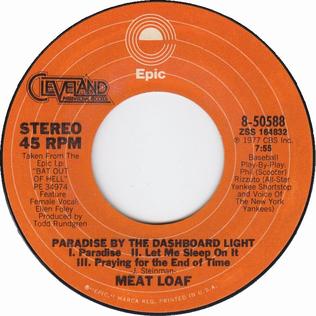
"Paradise by the Dashboard Light" is a song written by Jim Steinman. It was released in 1977 on the album Bat Out of Hell, with vocals by American musicians Meat Loaf and Ellen Foley. An uncommonly long song for a single, it has become a staple of classic rock radio and has been described as the "greatest rock duet".
Bearsville Records was founded in 1970 by Albert Grossman. The label closed in 1984, two years before Grossman's death. Sally Grossman, Albert Grossman’s widow, was running Bearsville Records from 2010 until her death in March 2021, at the age of 81.
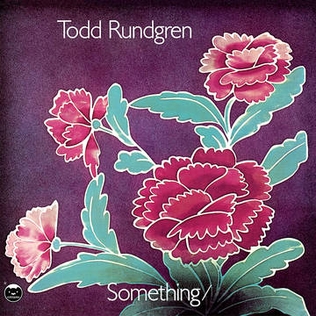
Something/Anything? is the third album by American musician Todd Rundgren, released in February 1972. It was Rundgren's first album released under his own name, following two records credited to the quasi-group project Runt, and was also his first double album. It was recorded in late 1971 in Los Angeles, New York City and Bearsville Studios, Woodstock. The album is divided into four sections focused on different stylistic themes; the first three parts were recorded in the studio with Rundgren playing all instruments and singing all vocals in addition to producing. The final quarter contained a number of tracks recorded live in the studio without any overdubs, save for a short snippet of archive recordings from the 1960s.

A Wizard, a True Star is the fourth studio album by American musician Todd Rundgren, released on March 2, 1973, by Bearsville Records. It marked a departure from his previous album, Something/Anything? (1972), featuring fewer straightforward pop songs, a development he attributed to his experimentation with psychedelic drugs and his realization of "what music and sound were like in my internal environment, and how different that was from the music I had been making."

Todd is the fifth studio album by American musician Todd Rundgren, released in February 1974 on Bearsville Records. It is the follow-up to the previous year's A Wizard, a True Star and features a comparatively heavier reliance on guitar playing and synthesizers. About half of the tracks were performed by Rundgren alone, with the other half recorded with varying configurations of musicians. In the US, the album peaked at number 54, while lead single "A Dream Goes On Forever" reached number 69.

Faithful is the seventh studio album by American musician Todd Rundgren, released in May 1976 on Bearsville Records.
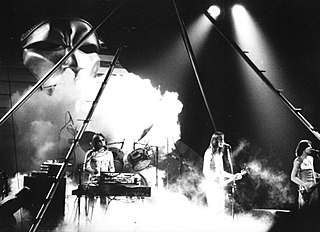
Utopia was an American rock band formed in 1973 by Todd Rundgren. During its first three years, the group was a progressive rock band with a somewhat fluid membership known as Todd Rundgren's Utopia. Most of the members in this early incarnation also played on Rundgren's solo albums of the period up to 1975. By 1976, the group was known simply as Utopia and featured a stable quartet of Rundgren, Kasim Sulton, Roger Powell and John "Willie" Wilcox. This version of the group gradually abandoned progressive rock for more straightforward rock and pop.
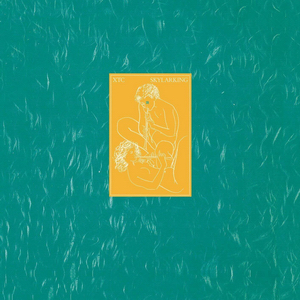
Skylarking is the ninth studio album by the English rock band XTC, released 27 October 1986 on Virgin Records. Produced by American musician Todd Rundgren, it is a loose concept album about a nonspecific cycle, such as a day, a year, the seasons, or a life. The title refers to a type of bird (skylark), as well as the Royal Navy term "skylarking", which means "fooling around". It became one of XTC's best-known albums and is generally regarded as their finest work.

"Can We Still Be Friends" is a song written and originally performed by Todd Rundgren.

Kasim Sulton is an American bass guitarist, keyboardist and vocalist. Best known for his work with Utopia, Sulton sang lead on 1980's "Set Me Free," Utopia's only top 40 hit in the United States. As a solo artist, Sulton hit the Canadian top 40 in 1982 with "Don't Break My Heart".

"I Saw the Light" is a song written and performed by American musician Todd Rundgren that was released as the opening track from his 1972 album Something/Anything? In the album's liner notes, Rundgren states that he intended the song to be the hit of the album, and copied the Motown tradition of putting hit songs at the beginning of albums.

Back to the Bars is a live album by rock musician Todd Rundgren, which was released as a double LP in 1978.
Bearsville Sound Studio was an independent residential recording studio founded by Albert Grossman in the Bearsville section of Woodstock, New York. From the late 1960s through the early 2000s, the studios were the site of notable recordings by numerous artists including Todd Rundgren, Meat Loaf, Tesla, R.E.M., Jeff Buckley, Dave Matthews Band, Phish and others.

Todd Rundgren's Utopia is the debut album by the American rock band Utopia, released on October 4, 1974 on Bearsville Records. The band was formed in 1973 by musician, songwriter, and producer Todd Rundgren who decided to expand his musical style by moving from pop-oriented rock towards progressive rock. He assembled a six-piece group that featured three keyboardists and toured as a live act. Most of the album was recorded in the studio except "Utopia", the opening track, which was recorded live in concert April 25th, 1974.
This article is a discography of American rock musician Todd Rundgren.
Mark "Moogy" Klingman was an American musician and songwriter. He was a founding member of Todd Rundgren's band, Todd Rundgren's Utopia, and later became a solo recording artist, bandleader and songwriter. He released two solo recordings, and his songs have been covered by artists as wide-ranging as Johnny Winter, Carly Simon, James Cotton, Thelma Houston, Eric Clapton, Barry Manilow and Guns N' Roses. He played on stage with Jimi Hendrix, Chuck Berry, Luther Vandross, Lou Reed, Jeff Beck and Allan Woody & Warren Haynes of the Allman Brothers and Gov't Mule. Other than Rundgren, his longest musical association may have been with Bette Midler, for whom he served as band leader and who adopted for her signature song "(You Gotta Have) Friends", composed by Klingman and William "Buzzy" Linhart.

"Hello It's Me" is a song written by American musician Todd Rundgren. It was the first song he wrote, and was recorded by his group Nazz as a slow ballad, released as the B-side of the band's first single, "Open My Eyes", in 1968. A mid-tempo version of "Hello It's Me", recorded for Rundgren's 1972 solo album Something/Anything?, was issued as a single in 1973, reaching No. 5 on the Billboard Hot 100 chart.
"Couldn't I Just Tell You" is a song written by American musician Todd Rundgren that was released on his 1972 album Something/Anything?. In July, it was released as a single and reached number 93 on the Billboard Pop Singles chart. The song is considered influential to the development of the power pop genre.
John "Willie" Wilcox is an American drummer, vocalist, producer, recording engineer, sound designer, composer, and senior audio director. He is best known for being a member of the band Utopia. He was also the senior audio director for Bally Technologies and Scientific Games in Las Vegas, Nevada from 2010 to 2020.

